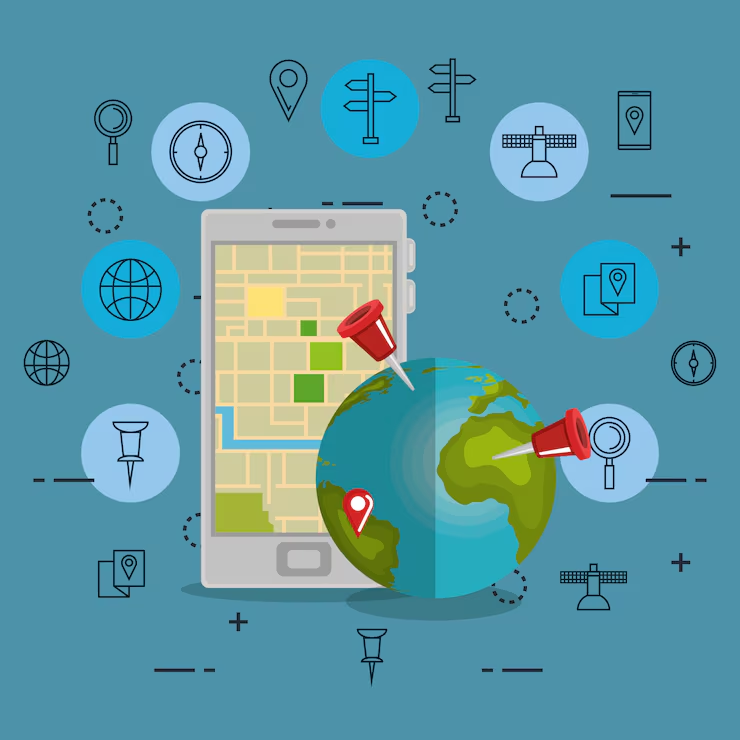
Close
Remote staff augmentation introduces unique communication challenges not typically found in traditional office environments. The absence of face-to-face interaction can lead to misinterpretation of tone and intent in written communications. Remote teams often comprise individuals from diverse cultural and linguistic backgrounds, further complicating communication.
Time zone differences can also hinder coordination of meetings and real-time communication. Another challenge in remote staff augmentation is the potential for misalignment of expectations and goals. Without clear communication, remote team members may not fully comprehend their roles and responsibilities, resulting in inefficiency and frustration.
Remote workers may also experience feelings of isolation and disconnection from the team, potentially impacting morale and productivity. To address these challenges, organizations must implement effective communication tools and platforms that enable seamless interaction among remote team members. Establishing clear communication protocols and expectations is essential to ensure all team members are aligned.
Additionally, fostering a culture of open and transparent communication is crucial for building trust and collaboration in remote staff augmentation teams.
In order to overcome the unique communication challenges of remote staff augmentation, organizations must implement effective communication tools and platforms that facilitate seamless interaction among team members. One of the most important tools for remote teams is a reliable video conferencing platform that allows for face-to-face interaction, which can help mitigate the lack of in-person communication. Additionally, instant messaging and collaboration tools such as Slack or Microsoft Teams can help facilitate real-time communication and collaboration among remote team members.
Furthermore, project management tools such as Trello or Asana can help remote teams stay organized and on track with their tasks and deadlines. These tools provide visibility into the progress of various projects and allow team members to easily communicate and collaborate on tasks. Additionally, cloud-based document sharing platforms such as Google Drive or Dropbox are essential for remote teams to easily access and collaborate on documents and files.
It is also important for organizations to provide training and support for these communication tools to ensure that all team members are comfortable using them. By implementing these effective communication tools and platforms, organizations can help remote staff augmentation teams overcome the challenges of distance and facilitate seamless interaction and collaboration.

In addition to implementing effective communication tools and platforms, it is essential for organizations to establish clear communication protocols and expectations for remote staff augmentation teams. This includes defining the preferred methods of communication, response times, and availability expectations. By setting clear guidelines for communication, organizations can ensure that remote team members are on the same page and understand what is expected of them.
Furthermore, organizations should establish regular check-in meetings to provide an opportunity for remote team members to discuss their progress, ask questions, and address any challenges they may be facing. These meetings can help foster a sense of connection and collaboration among remote team members, as well as provide an opportunity for managers to provide feedback and guidance. Additionally, organizations should encourage open and transparent communication among remote team members by creating a culture that values input and feedback from all team members.
This can help ensure that all voices are heard and that remote team members feel included and valued within the organization. By establishing clear communication protocols and expectations, organizations can help remote staff augmentation teams overcome the challenges of distance and ensure that all team members are aligned in their goals and responsibilities.
Fostering a culture of open and transparent communication is crucial for building trust and collaboration in remote staff augmentation teams. This involves creating an environment where all team members feel comfortable sharing their thoughts, ideas, and concerns without fear of judgment or reprisal. By encouraging open communication, organizations can ensure that all voices are heard and that remote team members feel included and valued within the organization.
One way to foster open communication is by creating opportunities for remote team members to engage in casual conversations and social interactions. This can help build rapport among team members and create a sense of camaraderie despite the physical distance. Additionally, organizations should encourage feedback from remote team members on a regular basis to ensure that their voices are heard and their concerns are addressed.
Furthermore, it is important for organizations to lead by example by demonstrating open and transparent communication at all levels of the organization. This includes providing regular updates on company goals and initiatives, as well as being transparent about any changes or challenges that may impact remote team members. By fostering a culture of open and transparent communication, organizations can build trust and collaboration in remote staff augmentation teams.
Remote staff augmentation often involves working with individuals from diverse cultural and linguistic backgrounds, which can present unique challenges in communication. Language barriers can lead to misunderstandings and misinterpretations, while cultural differences can impact how individuals communicate and interact with one another. To overcome these challenges, organizations must take proactive steps to address language and cultural barriers in remote teams.
One way to overcome language barriers is by providing language training or resources for remote team members who may not be fluent in the primary language used within the organization. This can help ensure that all team members are able to effectively communicate with one another and understand each other’s perspectives. Additionally, organizations should provide cultural sensitivity training to help remote team members understand and appreciate each other’s cultural differences.
This can help prevent misunderstandings and conflicts that may arise from cultural differences, as well as foster a more inclusive and respectful work environment. Furthermore, organizations should encourage open dialogue about cultural differences and provide opportunities for remote team members to share their experiences and perspectives. By creating a culture of inclusivity and understanding, organizations can help overcome language and cultural barriers in remote teams.

Time zone differences can make it challenging for remote staff augmentation teams to coordinate meetings and ensure real-time communication. This can lead to delays in decision-making, as well as difficulties in scheduling collaborative work sessions. To navigate time zone differences for seamless communication, organizations must take proactive steps to accommodate the needs of remote team members across different time zones.
One way to address time zone differences is by establishing core hours during which all team members are expected to be available for meetings and collaboration. By setting aside specific hours when all team members are expected to be online, organizations can ensure that there is dedicated time for real-time communication and collaboration. Additionally, organizations should leverage asynchronous communication methods such as email or project management tools to facilitate communication across different time zones.
This allows remote team members to communicate and collaborate on their own schedules without the need for real-time interaction. Furthermore, organizations should be mindful of scheduling meetings at times that are convenient for all team members, taking into account the different time zones in which they are located. By being considerate of time zone differences, organizations can ensure that all team members have equal opportunities to participate in meetings and collaborative work sessions.
Building trust and collaboration in remote staff augmentation teams is essential for ensuring productivity and success. Trust is the foundation of effective teamwork, while collaboration is crucial for achieving common goals and driving innovation. To build trust and collaboration in remote teams, organizations must take proactive steps to foster a sense of connection and camaraderie among team members.
One way to build trust in remote teams is by providing opportunities for team members to get to know each other on a personal level. This can include virtual social events, team-building activities, or casual conversations that allow team members to bond outside of work-related tasks. Additionally, organizations should encourage collaboration by creating opportunities for remote team members to work together on projects or initiatives.
This can help foster a sense of teamwork and shared purpose among team members, as well as drive innovation through diverse perspectives and ideas. Furthermore, it is important for organizations to recognize and celebrate the contributions of remote team members to foster a sense of appreciation and recognition. By acknowledging the efforts of remote team members, organizations can build trust and motivation within the team.
In conclusion, remote staff augmentation presents unique communication challenges that require proactive measures to overcome. By implementing effective communication tools and platforms, establishing clear communication protocols and expectations, fostering a culture of open and transparent communication, overcoming language and cultural barriers, navigating time zone differences, and building trust and collaboration, organizations can ensure seamless communication and success in remote staff augmentation teams.
If you’re interested in learning more about the pricing options for remote staff augmentation, check out this article on our website. It provides a detailed breakdown of our pricing structure and the different options available for businesses looking to augment their staff with remote workers.
Remote staff augmentation is the process of hiring external professionals or teams to work on specific projects or tasks remotely. This can include hiring individuals or teams to fill in skill gaps, increase capacity, or meet project deadlines.
Common communication challenges in remote staff augmentation include time zone differences, language barriers, cultural differences, lack of face-to-face interaction, and reliance on digital communication tools.
Communication challenges in remote staff augmentation can be overcome by establishing clear communication protocols, using collaboration tools, scheduling regular check-ins, providing detailed project briefs, and promoting a culture of open communication and feedback.
Overcoming communication challenges in remote staff augmentation can lead to improved productivity, better project outcomes, stronger team cohesion, and a more positive remote working experience for both the client and the remote staff.
Augmented Team Pvt Ltd

